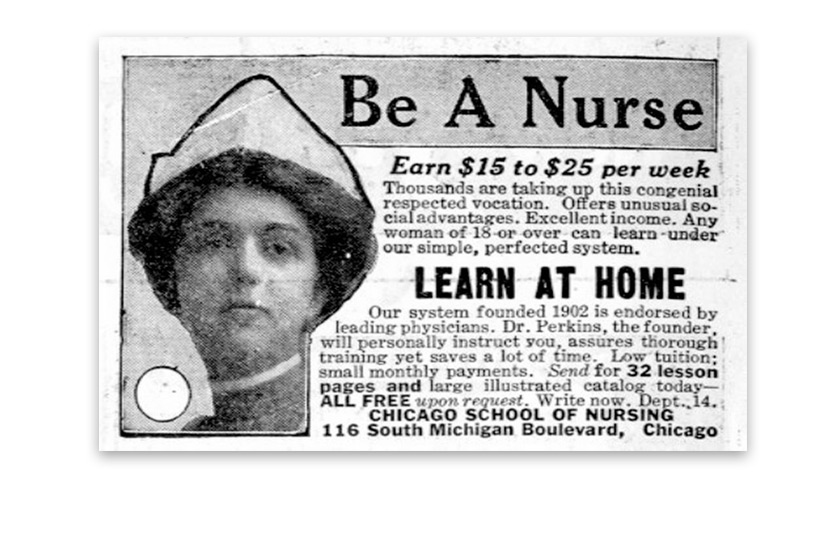
The Chicago chapter of the American Red Cross put out a call for volunteers due to a demand for nurses
On Oct. 11, 1918, the Chicago chapter of the American Red Cross put out a call for volunteers due to a demand for nurses.
Highlighting the plight of the city’s ill and playing on the heartstrings of women across the region, the Red Cross printed the story of a nurse who made a house call expecting to find a sick mother. Instead, she discovered that the entire family was stricken with influenza: the mother and two young children were all bedridden with high fevers, a 10-month old baby was starving, and the father was wandering the streets in fevered delirium, desperately trying to find a physician to care for his family.
“This case,” the Red Cross coordinator wrote, “tells its own story and makes its own appeal to the womanhood of Chicago.” The city’s settlement houses likewise called for volunteers. Some turned themselves over entirely to the epidemic cause.
The University of Chicago Settlement House, for example, stopped all its regular activities for several weeks during the epidemic in order to host an emergency hospital and diet kitchen, the latter serving a total of approximately 3,000 meals.
Perhaps because of the increasing occurrence of news such as this, the Illinois Influenza Advisory Commission slowly began changing its tune. The first steps it took were to pass a binding resolution on October 11 banning public dancing in all clubs, cabarets, and halls and to prohibit all public funerals across the state. The Commission reasoned that public dancing was a particularly efficient way both to transmit and contract influenza because of the close contact between dancers and the chilling of sweaty bodies that usually followed a rigorous dance.
Tags:
Source: Influenza Encyclopedia
Credit: Photo: Courtesy University of Michigan Center for the History of Medicine.
